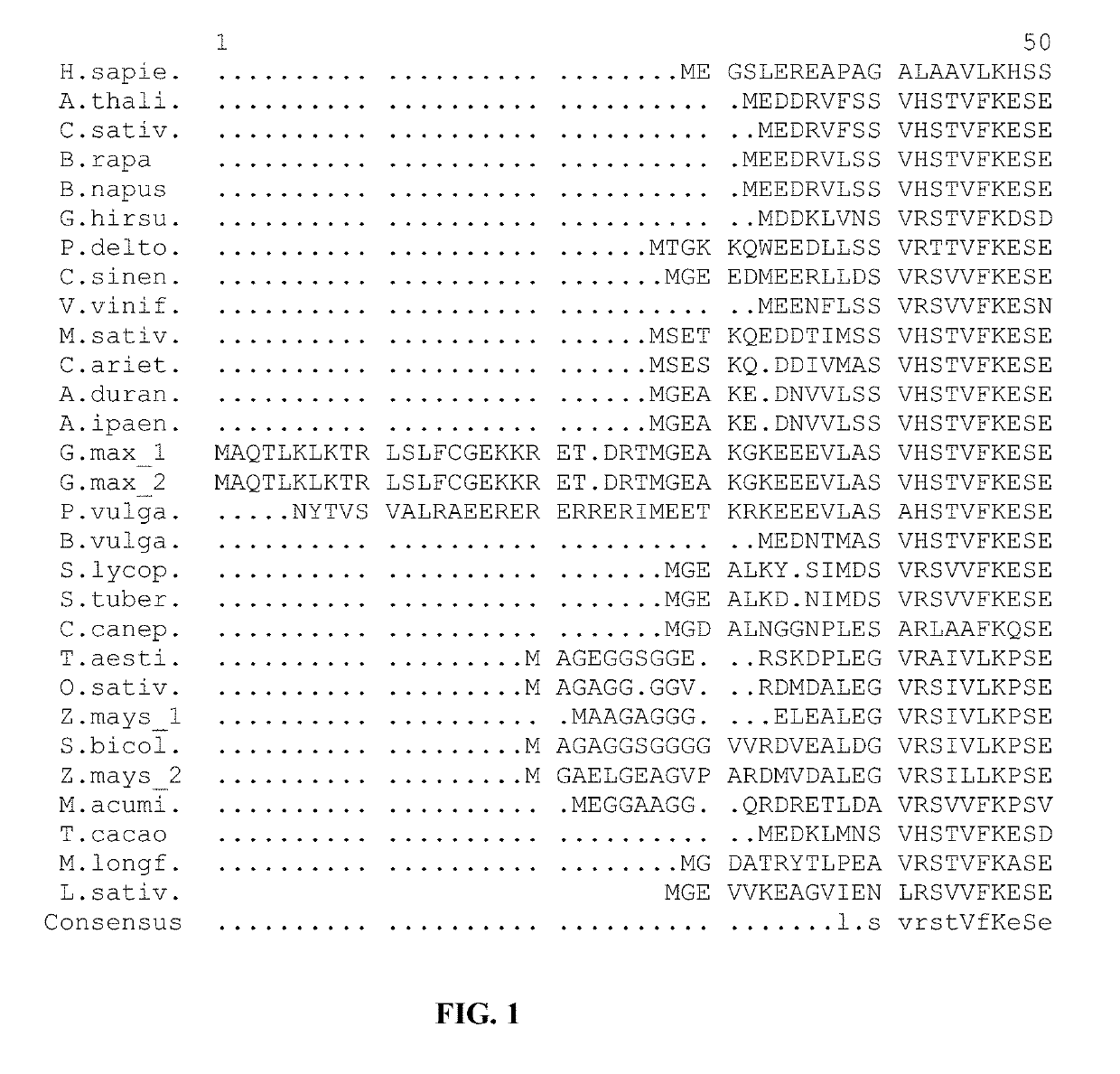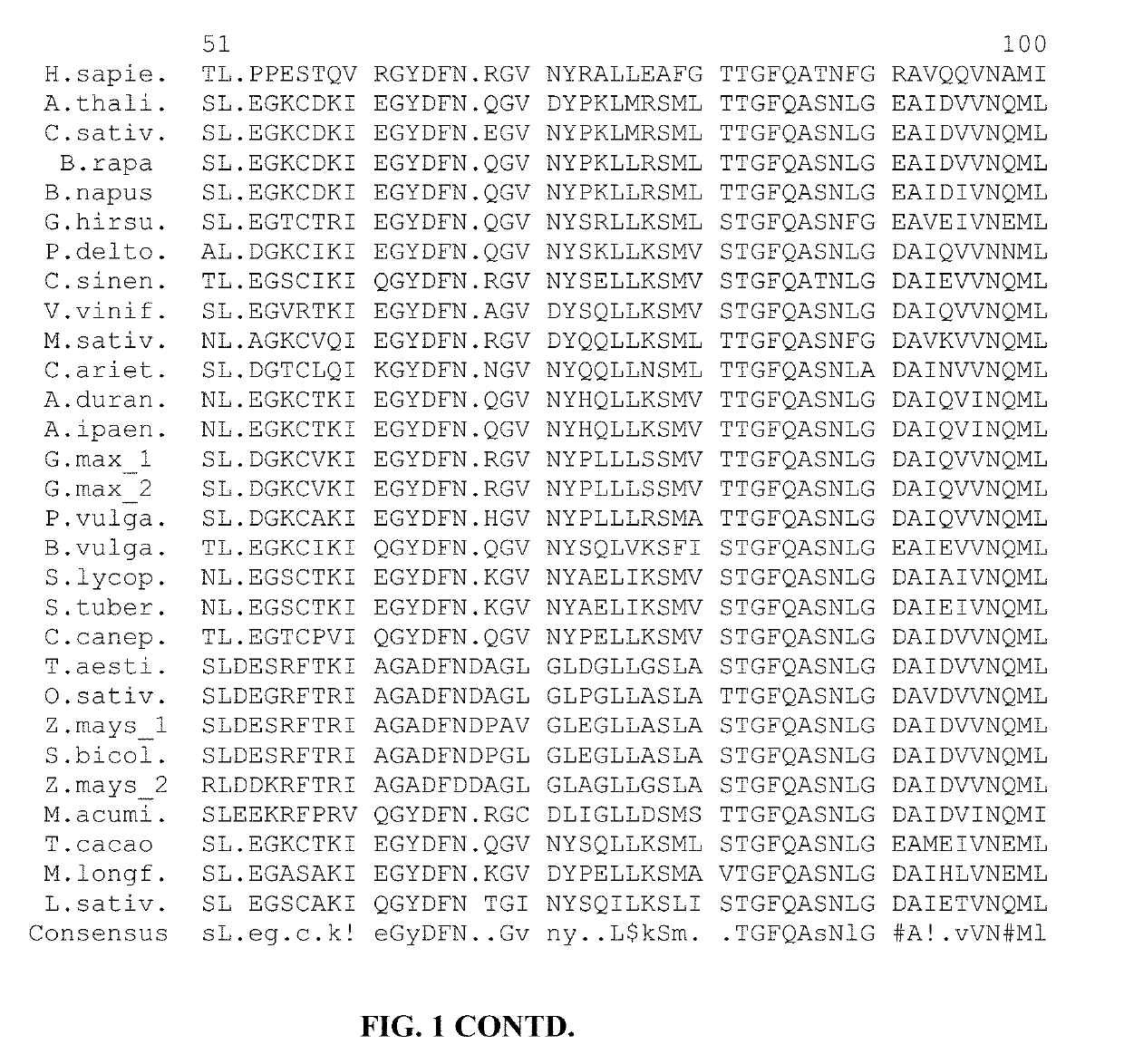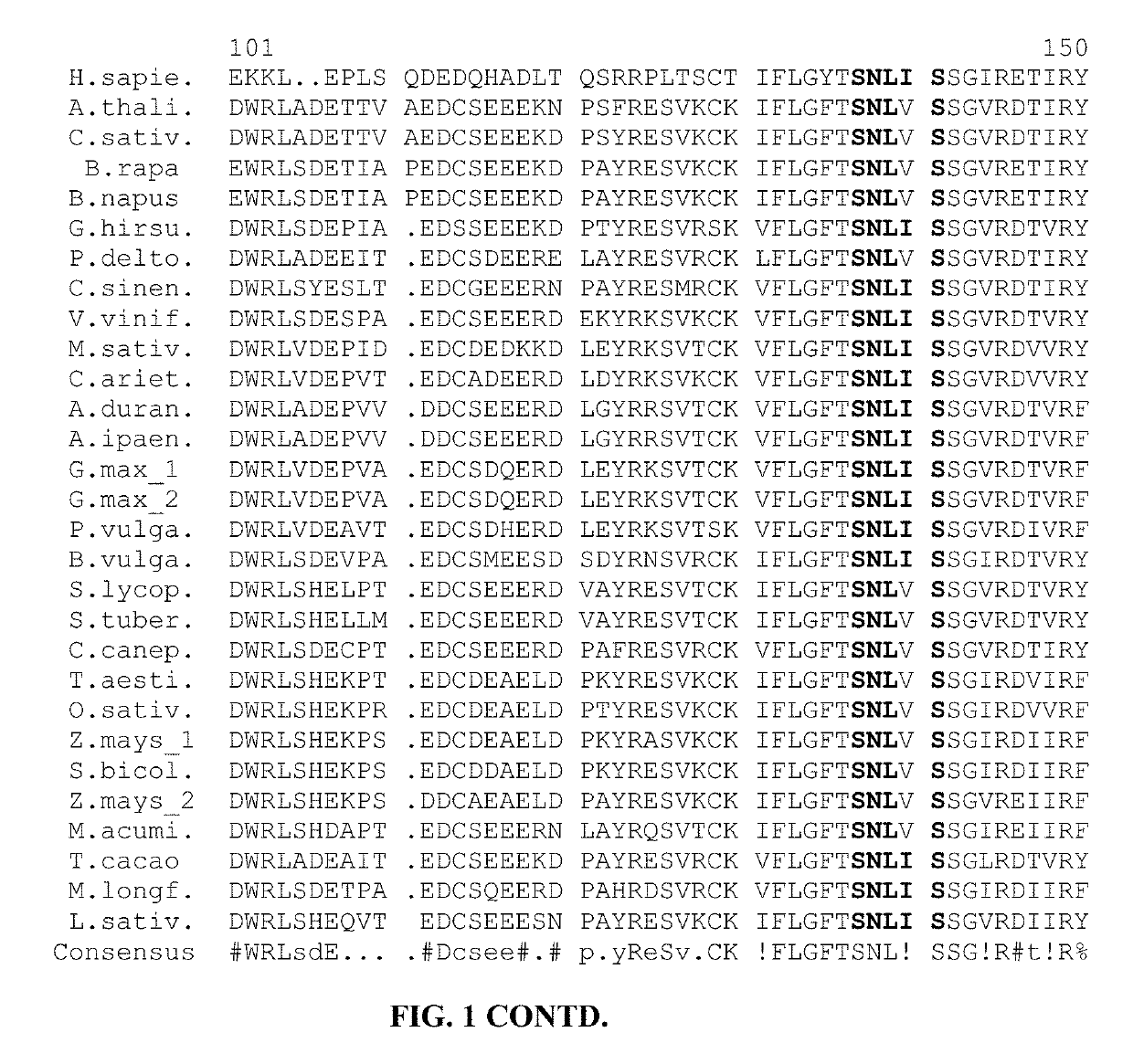Plants With Modified DHS Genes
a technology of dhs genes and plants, applied in the field of plants with modified dhs genes, can solve the problems of loss of antisense expression in future generations of transgenic plants, disruption of gene function, and almost complete loss of enzymatic activity, and achieve the effects of reducing fruit or vegetable spoilage, prolonging life or shelf life, and prolonging flower li
- Summary
- Abstract
- Description
- Claims
- Application Information
AI Technical Summary
Benefits of technology
Problems solved by technology
Method used
Image
Examples
examples
[0048]Example 1: Genomic DNA sequences were identified for 31 DHS genes from 28 plant species and human, and delineated into exons and introns. Two DHS genes are shown for Glycine max (soy), Rosa chinensis (rose), and Zea mays (maize). Other species (e.g., Solanum lycopersicum—tomato) may have more than one DHS gene, even if only one is provided. Guide RNAs for editing DHS genes can be targeted to exons or introns within the genomic DNA. The exon-intron boundaries of these genomic DNAs are illustrated in FIG. 3.
[0049]A genomic DNA sequence for a DHS gene of Arachis duranensis is SEQ ID NO: 66, and the corresponding exons and introns are SEQ ID NO: 67 to SEQ ID NO: 81. A genomic DNA sequence for a DHS gene of Arachis ipaensis is SEQ ID NO: 82, and the corresponding exons and introns are SEQ ID NO: 83 to SEQ ID NO: 97. A genomic DNA sequence for a DHS gene of Arabidopsis thaliana is SEQ ID NO: 98, and the corresponding exons and introns are SEQ ID NO: 99 to SEQ ID NO: 111. A genomic D...
example 9
DNA from a Pre-Determined Genomic Locus Using Non Homologous End Joining
[0060]A first gRNA is designed to anneal with a first desired site in the genome of a plant of interest and to allow for interaction with one or more Cms1 or other CRISPR double stranded nuclease proteins. A second gRNA is designed to anneal with a second desired site in the genome of a plant of interest and to allow for interaction with one or more CRISPR nuclease proteins. Each of these gRNAs is operably linked to a promoter that is operable in a plant cell and is subsequently cloned into a vector that is suitable for plant transformation. One or more genes encoding a Cms1 or other CRISPR double stranded nuclease protein is cloned in a vector such that they are operably linked to a promoter that is operable in a plant cell (the “CRISPR nuclease cassette”). The CRISPR nuclease cassette and the gRNA cassettes are cloned into a single plant transformation vector that is subsequently transformed into Agrobacterium...
example 10
e Substitutions in DNA at a Pre-Determined Genomic Locus using Homology Directed Repair
[0061]A gRNA is designed to anneal with a desired site in the genome of a plant of interest and to allow for interaction with one or more Cms1 or other CRISPR double stranded nuclease proteins. The gRNA is operably linked to a promoter that is operable in a plant cell and is subsequently cloned into a vector that is suitable for plant transformation. One or more genes encoding a Cms1 or other CRISPR double stranded nuclease protein is cloned in a vector such that they are operably linked to a promoter that is operable in a plant cell (the CRISPR nuclease cassette), along with a highly expressed single or double stranded donor DNA oligonucleotide comprised of a sequence homologous to a targeted DNA in the host genome but containing specific base changes that cause one or more targeted mutations that occur by Homology Directed Repair [Miki et al. (2018) Nature Comm. 9: 1967-1975]. The CRISPR nucleas...
PUM
| Property | Measurement | Unit |
|---|---|---|
| time | aaaaa | aaaaa |
| environmental stress-induced senescence | aaaaa | aaaaa |
| temperature | aaaaa | aaaaa |
Abstract
Description
Claims
Application Information
 Login to View More
Login to View More - R&D
- Intellectual Property
- Life Sciences
- Materials
- Tech Scout
- Unparalleled Data Quality
- Higher Quality Content
- 60% Fewer Hallucinations
Browse by: Latest US Patents, China's latest patents, Technical Efficacy Thesaurus, Application Domain, Technology Topic, Popular Technical Reports.
© 2025 PatSnap. All rights reserved.Legal|Privacy policy|Modern Slavery Act Transparency Statement|Sitemap|About US| Contact US: help@patsnap.com



